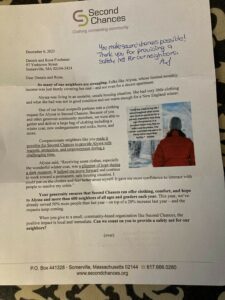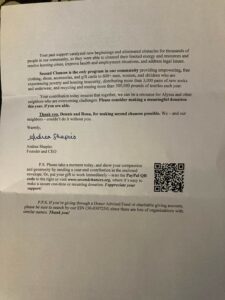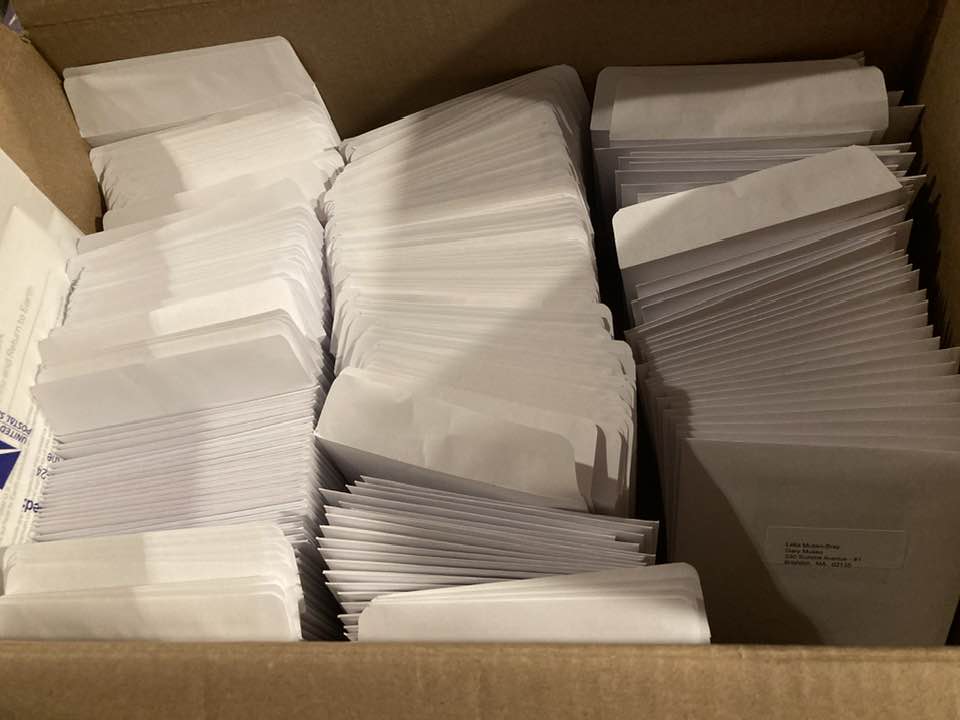A guest post by Liz Murphy of Allegiance Group
Omnichannel marketing is a technique in which nonprofits connect with their supporters through multiple communication channels, with the goal of creating a seamless experience between the various channels. Each message should feel like part of one unified, cohesive strategy that guides supporters to take a desired action, whether that’s donating, volunteering, or registering for a virtual event.
These campaigns can be extremely effective in building awareness of your organization, inspiring more donations, and connecting more deeply with supporters. To learn more about how to plan your first omnichannel campaign, follow these four steps:
- Determine the campaign’s objectives.
- Identify a target audience.
- Select communication platforms.
- Evaluate your performance.
1. Determine the campaign’s objectives.
Marketing objectives are clearly defined goals that lay out what you want the results of your campaign to be. These goals should follow the SMART goal framework, meaning that they should be:
- Specific: State what you want the campaign to do using specific numbers (e.g., raise $5,000).
- Measurable: Identify the metrics or data targets you’ll need to track. Allegiance Group’s guide to fundraising tools recommends choosing software that offers a robust analytics dashboard to accurately track your marketing progress.
- Achievable: Analyze past campaign performance and choose goals that are challenging yet possible for your nonprofit to accomplish.
- Relevant: Specify why it makes sense for your nonprofit to tackle this objective at this time (e.g., it relates to your mission or benefits a key project or initiative).
- Time-based: Lay out a timeframe for reaching the goal.
Let’s say your nonprofit is creating a campaign to promote its most lucrative fundraising event with your main focus being to increase registrations. In this case, your SMART goal might be to achieve a 20% increase in registrations within the three months prior to the event compared to the previous year by using a more efficient registration platform and leveraging targeted marketing messages.
2. Identify a target audience.
To attract potential donors, you’ll need to identify specific audiences and determine their values, communication preferences, and other key characteristics.
Take a look at your existing donors. Which qualities appear over and over? NPOInfo’s guide to donor data recommends breaking down your file into useful categories or segments based on those qualities. These segments may be based on donors’:
- Ages
- Locations
- Giving behaviors (e.g., frequency and/or amount)
- Interests or support for specific projects
- Communication preferences (e.g., email vs. direct mail) and engagement
There are so many other categories to choose from, but it’s best to select those that will assist you in meeting your nonprofit’s needs and achieving your campaign goals.
3. Select communication platforms
Based on your findings about your target audience, choose the communication channels they are most likely to engage with on a regular basis. Nonprofits commonly use channels like email, social media, text, phone calls, direct mail, and print and digital ads.
When choosing communication platforms, keep these tips in mind:
- Focus on quality over quantity. Avoid taking on more platforms than your nonprofit can realistically manage. Instead, prioritize creating engaging content that persuades supporters to donate or get involved in another way. Consider using tools like social media calendars and email marketing software to stay organized.
- Connect each platform for a seamless experience. On social media, include links to your website and profiles on other platforms. Encourage email recipients to follow your accounts and check out your website. You can even add QR codes linking to online channels to your direct mail campaigns.
- Tailor content to the audience and platform. Become familiar with the unique preferences associated with both your target audience and the platforms you use. Make sure your message aligns with the tone and value that your audience will expect as well as the expectations for each communication channel. Social media posts, for example, should be short and attention-grabbing, while blog posts can be much more detailed.
Similar to goal-tracking, it’s important to measure your campaign’s performance on each platform. Make sure to identify which metrics determine success for each—for example, the clickthrough rate is crucial for email marketing whereas likes and shares are important for social media.
4. Evaluate your performance.
After your campaign ends, you still have work to do. It’s essential to take the time to analyze your findings, determine whether you met your goals, and plan for future campaigns.
If you met or exceeded your goals for the campaign, pinpoint the strategies that you think pushed your campaign over the finish line. For example, maybe you tried using a new campaign for the first time or sent targeted messages using your demographic-focused donor segments. Once you understand what resonates with your audience, you can replicate and refine those tactics in the future.
If you fell short of your goal, use it as a learning opportunity. Refer back to your initial goal and ask yourself if it was too ambitious for your nonprofit to achieve at this point. Additionally, make sure to identify the wins and losses from the campaign so you know which strategies to keep, which to tweak, and which to remove altogether.
As a result of your hard work, you’ll be able to create a nonprofit omnichannel marketing campaign that feels consistent and connected to your audience. This will deepen their relationship with your organization and inspire them to donate, volunteer, and share about your mission to further the work you do.
Liz Murphy is an EVP at Allegiance+Pursuant Group, a direct response fundraising agency and technology company. Liz has more than 30 years of experience growing digital and integrated fundraising and communications programs for social justice, health, and international relief nonprofit organizations.
Liz is an award-winning copywriter and is a frequent speaker at industry conferences, including ANA, DMAW, Bridge, and NTC. She is also a member of the Board of Directors of the Direct Marketing Association of Washington Educational Foundation.




